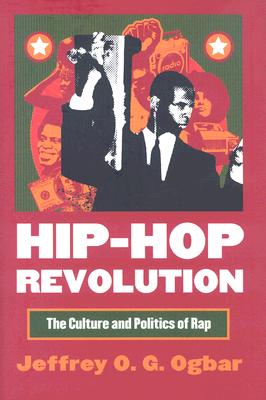Robert Charette, the author of this review, is a senior at Penn St. University. For an assignment in his Literature Public Sphere class, he was told to review a book and have it published somewhere “where someone decides whether or not something or not is published.” For some foolhardy reason, Robert requested that The Passion of the Weiss be that great decider. I imagine that vast quantities of Natural Lite had something to do with the choice, but hey.
Hip-Hop made its mark as the music of the oppressed and misrepresented. Think “The Message,” “White Lines,” and “Rapper’s Delight” (the latter of which tackled tough questions of what to do when your friend’s mother serves chicken that tastes like wood.) This characteristic has made it both ridiculously lucrative and helped it achieve relative ubiquity over the past 15 years of pop culture. But today’s current climate reflects a fandom divided. The decline of “socially conscious rap” and the stanky leg, the Soulja Boy, etc. have forced people to reevaluate the veracity of Chuck D’s claim that hip-hop was the “CNN of the Ghetto.” Then again, if you go to the CNN homepage, you can find the headline: “Dazzling on the Red Carpet.” So…
The internet’s latest salvo over hip-hop’s status quo found “New Yorker” critic Sasha Frere-Jones insinuating that hip-hop lost its place as vanguards of the avant-garde by gradual drifting and eventually submerging itself in the mainstream of pop culture. Positioning themselves as genre defenders,Brooklyn hip-hop duo Das Racist penned a scathing rebuttal that argued that while hip-hop’s sound has evolved, it remains effective as social commentary. While Jeffrey “O.G.” Ogbar, author of “The Culture and Politics of Rap,” may share Frere-Jones’ academic credentials, he leans toward the opinions of Das Racist.
If the key to winning any argument is acknowledging its flaws before expressing why you’re right, Ogbar passes his test with high marks. He starts the book by analyzing the five types of “real niggas” in hip-hop music. According to Ogbar, the term “real niggas” sits at the crux of both hip-hop and his own analysis: a term taboo for even the most talented white rappers (see Eminem’s N-word controversy of 2003. On the other end of the racial spectrum, the term is canonized by black and even Latino rappers. It helps to illustrate the racial connotations and unwritten rules of rap music.
Throughout the book, Ogbar explains how rappers strive for authenticity by “keepin’ it real”. Realness dictating how they rap, walk, talk, and make their music. This realness is directly translated into commercial capital, evidenced by how many records they sell. Perhaps the most glaring example is the case of Ja Rule, a multi-platinum artist until Curtis “Formula 50” Jackson branded him a “wanksta,” starting a spiral that effectively ending Ja’s career and leaving him on street corners, wearing fur, and screaming “Holla” in a gruff sub-DMX rasp.
Ogbar argues that realness is perpetually in-flux–with rappers like Dead Prez offering “black militant expressions of nationalism” and others like 50 Cent projecting realness as the simple idea that he’s “badder than you.” Of course, hip-hop is riddled with contradictions. If it wasn’t Rick Ross wouldn’t have sold a record after being outed as a C.O. Ogbar adduces that the contradictions began with hip-hop’s roots as a genre created by working class African-Americans, who eventually found commercial success peddling records to surburban white kids. When Ice-T, N.W.A. et. al discovered that the gangsta pose offered an entirely new (and lucrative) reality that was being ignored in the press, the industry ascended to new heights. By the middle part of this decade, it created a singular paradigm in which thug-life was the only avenue (at least on major labels), with even a post-50 Cent Eminem boasting about the A.K’s he owned.
Yet despite the gangster tropes it pushes,Ogbar credits hip-hop music for aiding the evolution of how black people are portrayed in America–away from the minstrel images of the early 20th century into the strong positive models they are today. The only non-athlete African Americans to be listed on Forbes’ list of Wealthiest Americans Under 40 is hip-hop impresario, Jay-Z, a guy who flipped a “half a key” into his own label to retain ownership of his music. That’s a successful realization of the “American Dream,” commensurate with the whitest of Wall Street investors who hit it big.
Not content to focus on only males, Ogbar also shows how hip-hop can empower women into strong figures in society. Female rappers like Lil’ Kim make black women seem hyper-sexualized and shallow, but can’t hold a candle to artists like Lauryn Hill who have sold records, received critical acclaim, and projected a positive self-image of African-American women. Ultimately, both women’s ability to build their brands, illustrates that whatever avenue a female M.C. wants to go down, she can succeed in the rap game (unless she’s as good as Jean Grae).
Give Jeffrey Ogbar credit. Breaking down a complex and contradictory culture for white academic audiences is never an easy thing to do. Yet somehow, by the graces of the God-M.C., Ogbar presents a convincing and compelling message which is to be expected from a man with the middle name “O.G.”


